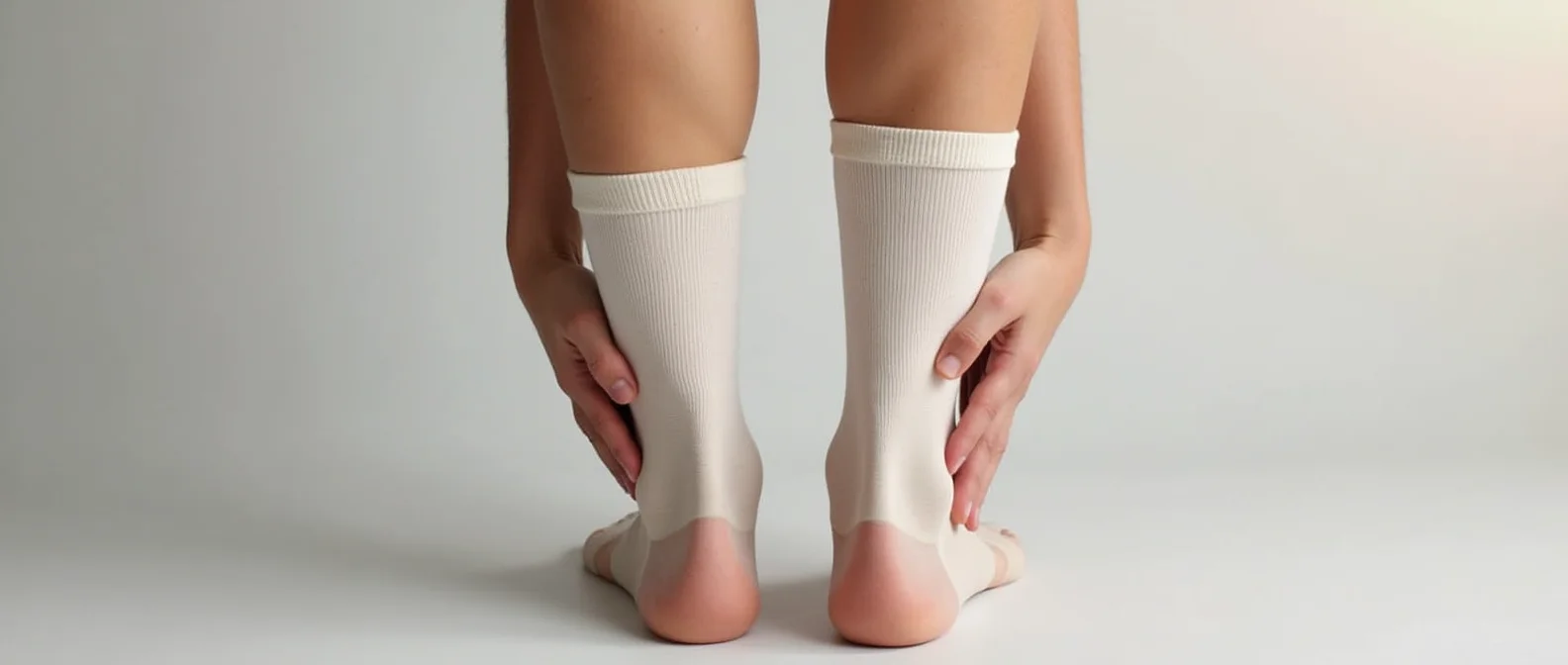Are you tired of the constant discomfort that comes with neuropathy? The tingling, burning, and stabbing sensations in your feet can make daily activities seem unbearable. If you’re dealing with peripheral neuropathy, you know how challenging it is to find effective relief. Fortunately, compression socks can be a game-changer, offering targeted support and comfort to help you manage neuropathy pain.
In this article, we’ll walk you through everything you need to know about compression socks for neuropathy—from how they work to the best options available on the market. Get ready to discover how these simple yet powerful garments can make a world of difference in your daily life.
Table of Contents
What Is Neuropathy and How Does It Affect Your Feet?
Before we dive into the benefits of compression socks, it’s important to understand the condition you’re dealing with. Neuropathy, particularly peripheral neuropathy, affects the nerves that connect your brain and spinal cord to your limbs and organs. When these nerves are damaged, they can cause a range of symptoms in your feet, including:
- Tingling or burning sensations
- Numbness
- Sharp, stabbing pain
- Weakness or loss of coordination
The result is often constant discomfort and pain, making it difficult to walk, stand, or even get a good night’s rest.
Why Compression Socks Are Your Solution to Neuropathy Pain
How Compression Socks Work to Relieve Foot Pain
Compression socks are specifically designed to apply gentle pressure to your legs and feet. This pressure helps improve circulation by encouraging blood flow back to the heart. For people with neuropathy, this means reduced swelling, less pain, and greater overall comfort. Here’s how they help:
- Boost Circulation: Compression socks help your blood flow more efficiently, which can reduce the tingling and numbness often caused by neuropathy.
- Reduce Swelling: By preventing fluid from accumulating in your feet and ankles, compression socks can minimize swelling, which is a common symptom of neuropathy.
- Provide Comfort: The consistent pressure they apply helps relieve the discomfort and pain associated with neuropathy, giving you the ability to move more freely.
Why You Should Consider Compression Socks for Neuropathy
- Improved Quality of Life: Compression socks can make a big difference in how you feel day-to-day. By reducing symptoms, they help you stay more active, which is important for overall health.
- Non-invasive Solution: Unlike medications or invasive procedures, compression socks are a simple, drug-free way to manage neuropathy.
- Affordable and Accessible: Compression socks are affordable and easy to access, making them a cost-effective option for managing neuropathy pain.

Top Compression Socks for Neuropathy – Our Expert Picks
When it comes to choosing the best compression socks for neuropathy, you want products that provide both comfort and effectiveness. Below are our top picks to help you get the relief you need:
1. [Sigvaris] Compression Socks for Neuropathy
- Compression Strength: 20-30 mmHg for targeted support.
- Features: Moisture-wicking fabric to keep your feet dry, seamless design to prevent irritation, and extra cushioning for added comfort.
- Pros:
- Ideal for moderate to severe neuropathy.
- Soft yet supportive.
- Great for daily wear or overnight use.
- Cons: May be too tight for individuals with sensitive skin.
- Price: About $50 to $90, depending on model and size.
This is a favorite among neuropathy sufferers for its high compression level, offering a solid balance between comfort and relief. Whether you’re at work, walking, or resting, these socks provide the support your feet need.
2. [Jobst] Diabetic Compression Socks
- Compression Strength: 15-20 mmHg, perfect for diabetic neuropathy sufferers.
- Features: Anti-odor technology, seamless toe design, and extra ankle support to enhance comfort.
- Pros:
- Ideal for diabetic neuropathy.
- Breathable fabric keeps feet cool and dry.
- Durable and long-lasting.
- Cons: May not provide enough compression for severe cases of neuropathy.
- Price: About $25 to $50, depending on model and size.
These socks are specifically designed for people with diabetes, offering a gentle yet effective compression level to help manage neuropathy symptoms.
3. [Physix Gear] Knee-High Compression Socks
- Compression Strength: 8-15 mmHg, best for light swelling and mild neuropathy.
- Features: Non-slip cuffs, reinforced toe and heel, and stretchy fabric for a snug fit.
- Pros:
- Comfortable for all-day wear.
- Easy to put on and take off.
- Great for light to moderate neuropathy.
- Cons: May not be as effective for severe neuropathy symptoms.
- Price: About $20 to $30, depending on model and size.
If you’re looking for something that’s comfortable for daily wear without being too restrictive, these knee-high compression socks are a great choice.
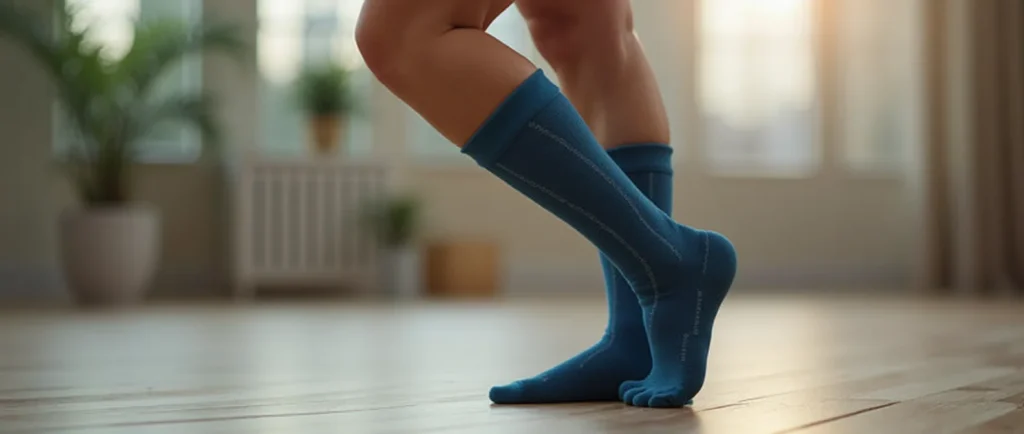
Compression Socks Comparison Chart
| Brand Name | Compression Strength | Key Features | Price Range | Ideal For |
|---|---|---|---|---|
| [Sigvaris] | 20-30 mmHg | Moisture-wicking, Seamless, Cushioned | $50 to $90 | Moderate to severe neuropathy |
| [Jobst] | 15-20 mmHg | Anti-odor, Extra ankle support | $25 to $50 | Diabetic neuropathy |
| [Physix Gear] | 8-15 mmHg | Non-slip cuff, Reinforced toe | $20 to $30 | Mild neuropathy |
How to Choose the Right Compression Socks for Your Needs
Selecting the right compression socks is crucial to getting the best results. Here are some key factors to consider when making your choice:
1. Compression Level (mmHg)
Compression socks come in different levels of pressure, measured in millimeters of mercury (mmHg). The right level depends on the severity of your symptoms:
- 8-15 mmHg: Light compression for mild swelling and discomfort.
- 15-20 mmHg: Moderate compression for more noticeable symptoms.
- 20-30 mmHg: High compression for severe neuropathy symptoms.
2. Fit and Comfort
Make sure the socks fit snugly but are not too tight. A proper fit is essential to avoid cutting off circulation. Check the sock’s size guide and choose according to your foot and calf measurements.
3. Material
Look for socks made from breathable materials like cotton, spandex, or bamboo. Moisture-wicking fabrics can help keep your feet dry and prevent the growth of bacteria, which is especially important if you have diabetes.
4. Durability
Compression socks should be durable enough to withstand frequent use and washing. Opt for high-quality brands that offer long-lasting performance.
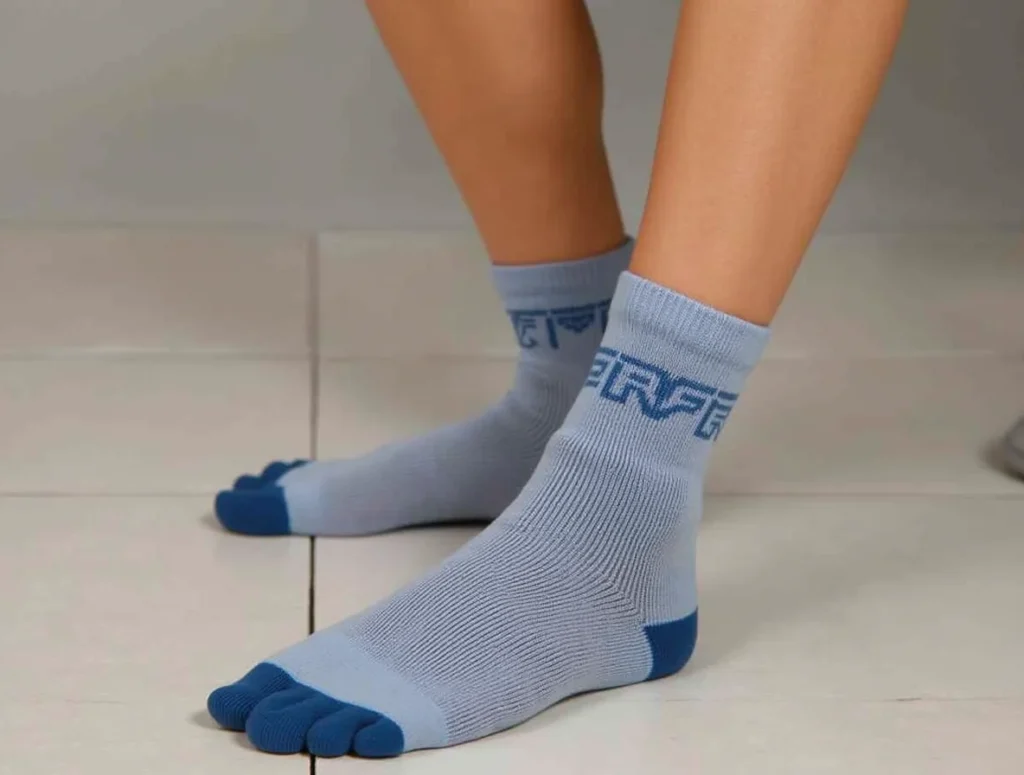
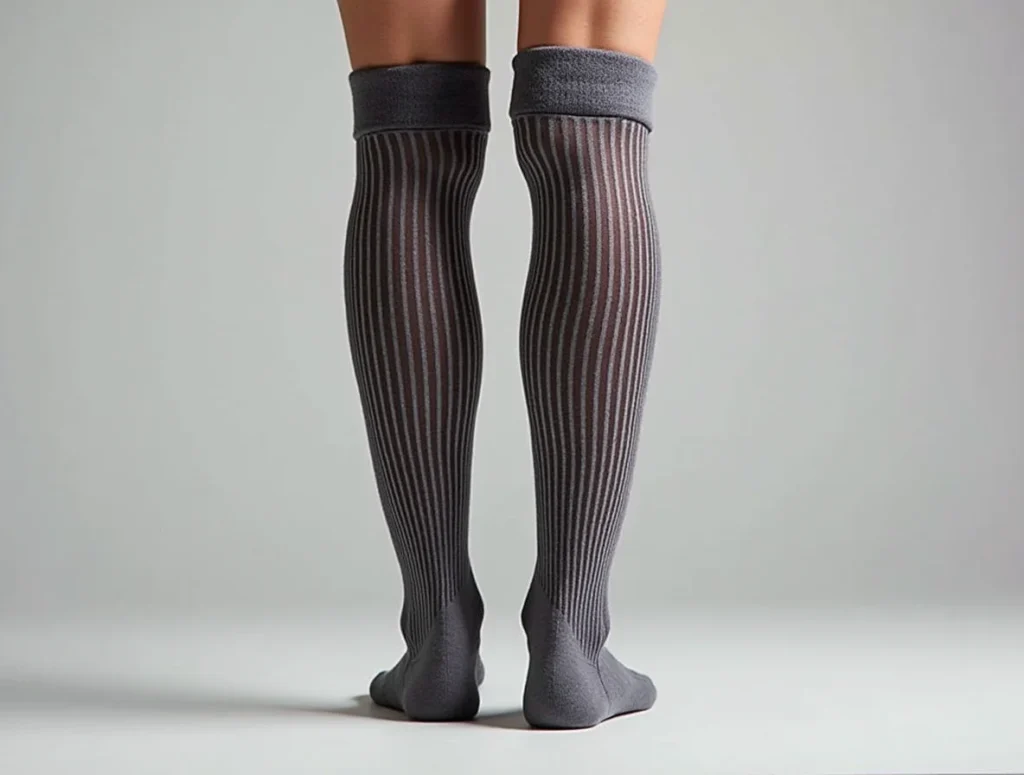
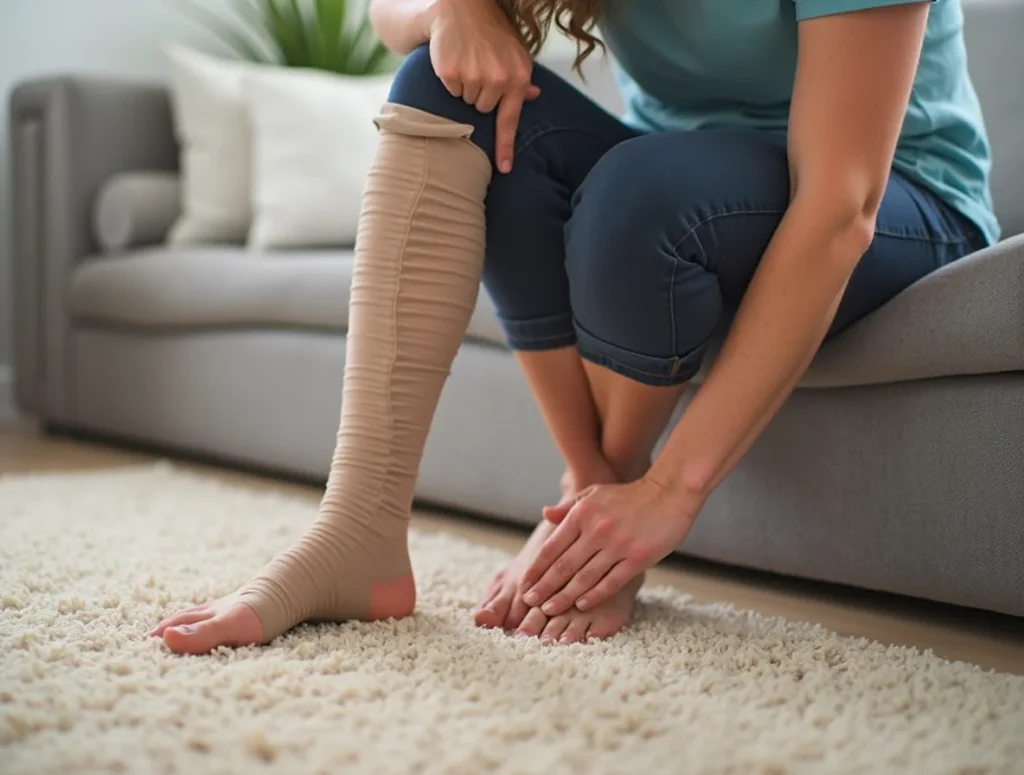
How to Wear and Care for Compression Socks
To get the most out of your compression socks, it’s important to wear them properly and take care of them. Here are some tips:
When to Wear Compression Socks
- Daily Wear: For the best results, wear your compression socks every day, especially during the hours when you’re on your feet the most.
- Overnight Use: Some people find that wearing compression socks while sleeping provides additional relief, but consult with your doctor before doing so.
Putting on Compression Socks
- Start from the Toes: Gently roll the sock down to the toe area and then gradually pull it up, making sure it’s smooth and wrinkle-free.
- Avoid Twisting: Be careful not to twist or stretch the sock, as this can cause damage to the material.
Caring for Your Compression Socks
- Hand Wash: Always hand wash or use a delicate cycle in the washing machine to preserve the elasticity of the socks.
- Air Dry: Avoid using the dryer, as heat can degrade the fabric and reduce the effectiveness of the compression.
Additional Tips for Managing Neuropathy Foot Pain
Compression socks are an excellent tool for managing neuropathy, but they should be part of a broader pain management plan. Here are some additional tips to help alleviate foot pain caused by neuropathy:
- Foot Exercises: Stretching and strengthening your feet regularly can improve circulation and reduce discomfort.
- Proper Foot Care: Keep your feet clean and moisturized to avoid infections and skin breakdown.
- Diet and Supplements: Eating a balanced diet rich in vitamins and minerals, including B vitamins, can support nerve health.
Conclusion
If you’re living with neuropathy, you know how debilitating the pain can be. Fortunately, compression socks for neuropathy can provide a simple and effective solution. With the right pair, you can experience improved circulation, reduced swelling, and significant pain relief.
Don’t let neuropathy control your life any longer. Take action today and try the best compression socks for neuropathy to start feeling better, moving with ease, and enjoying your life again. Shop now and find the perfect pair for your needs!
FAQs
How do compression socks help with neuropathy pain?
Compression socks improve circulation and reduce swelling, helping to relieve the discomfort and tingling sensations associated with neuropathy.
What compression level is best for neuropathy?
Compression levels of 15-30 mmHg are typically recommended for managing
- Spectra Sock for Prosthetic Foot: Comfort, Durability, and Enhanced Mobility
- best Socks for Foot Neuropathy – Shop Comfort and Support
- Do Compression Socks Help Neuropathy? Find the Right Pair Now
- Best Compression Socks for Neuropathy – Relieve Pain Today
- Socks for Neuropathy: How They Help Relieve Foot Pain and Improve Comfort

